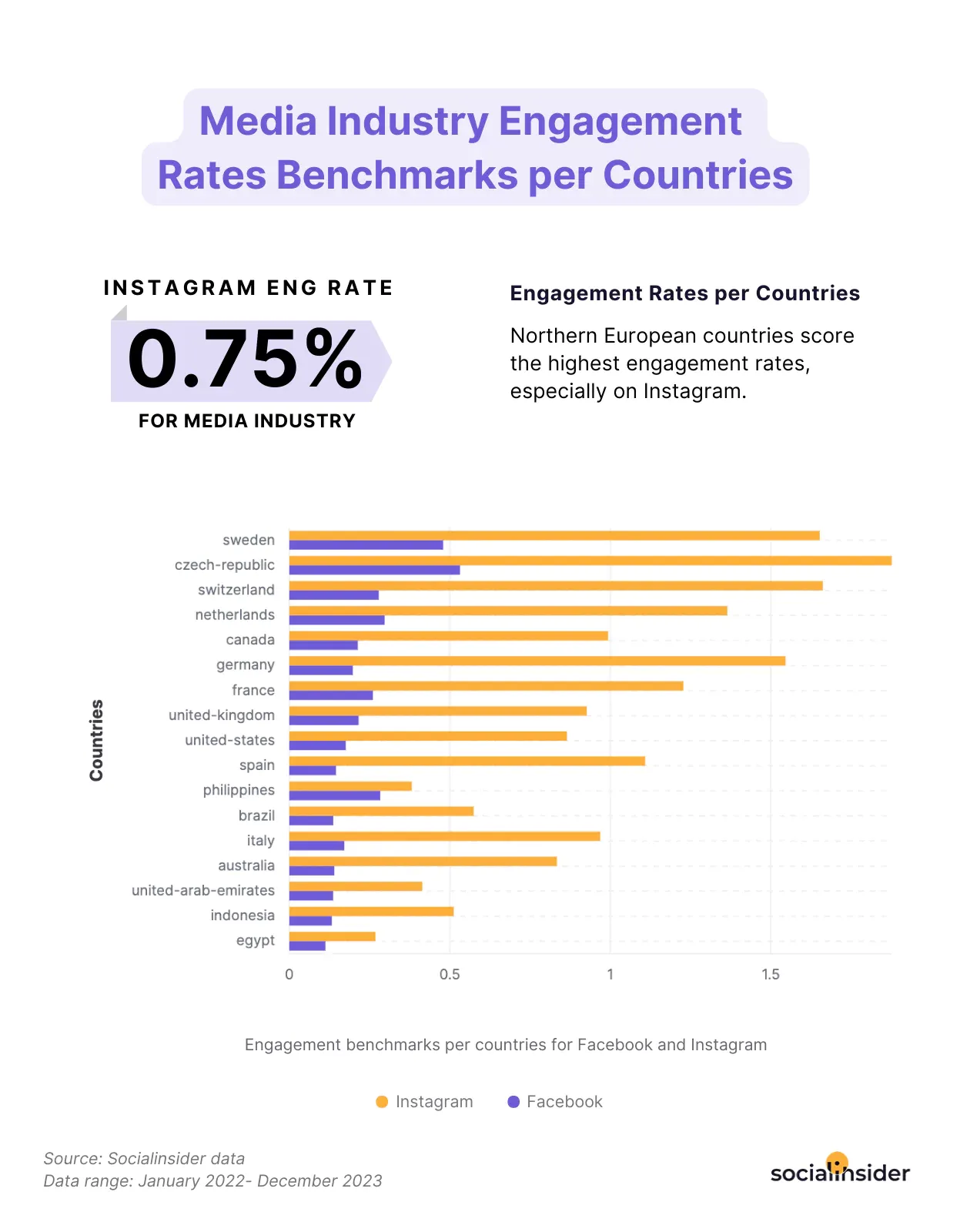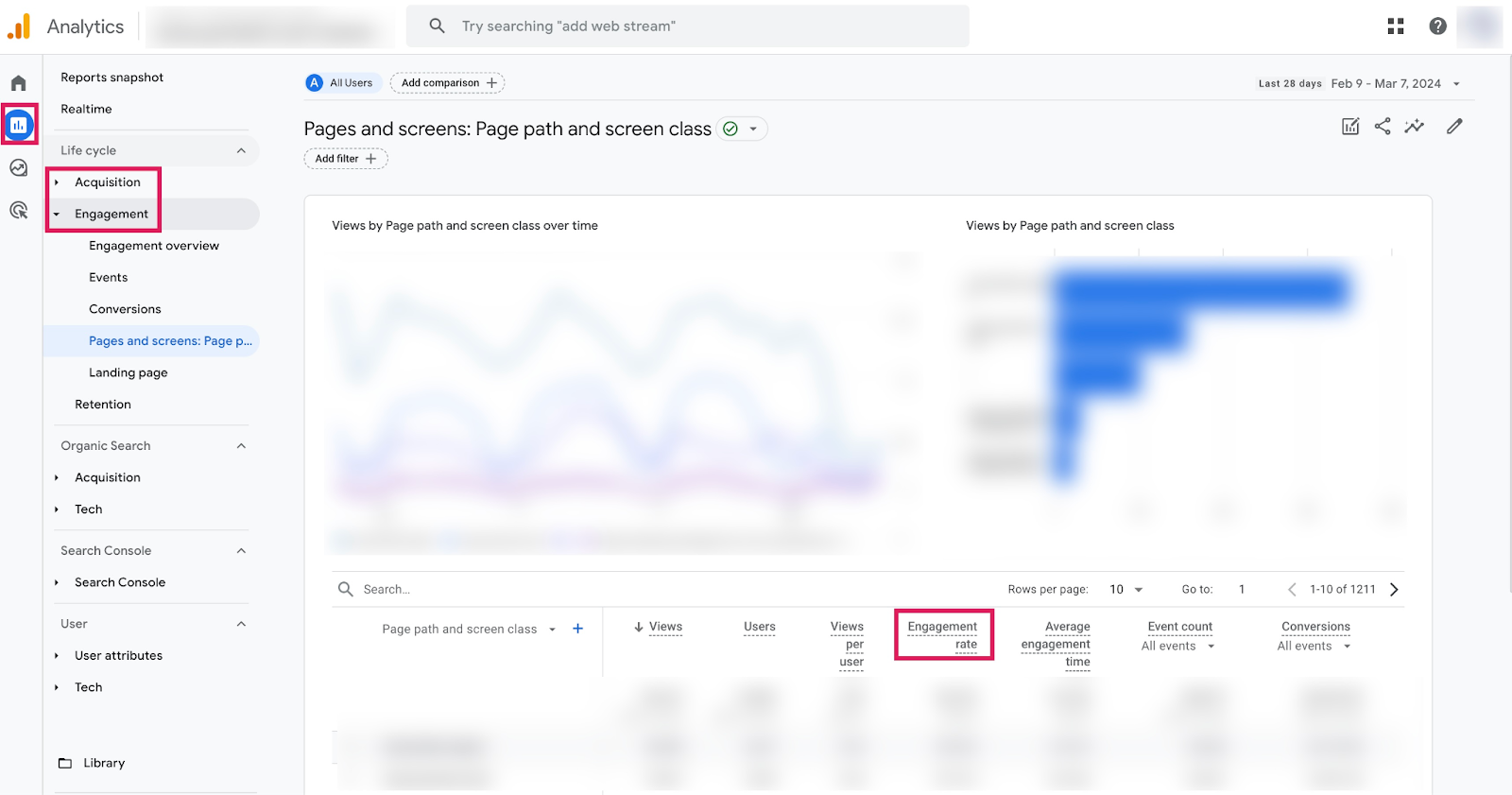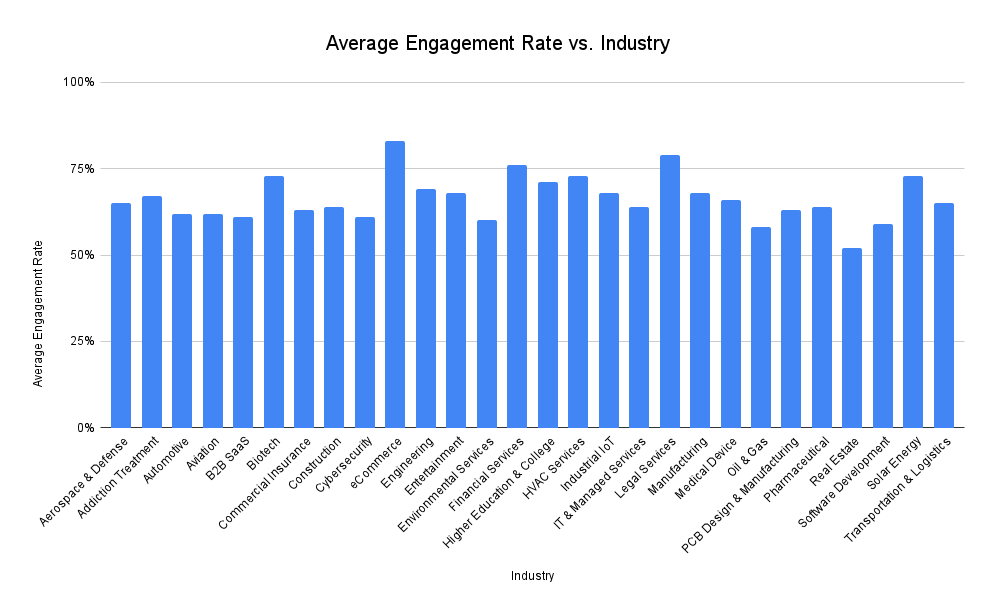The average engagement rate for SEO refers to the typical level of interaction users have with content. This includes likes, shares, comments, and clicks.
It is essential to understand this metric to gauge content effectiveness. Engagement rate is a crucial metric in digital marketing. It helps in measuring how well your content resonates with the audience. Knowing the average engagement rate for SEO can provide a benchmark for your efforts.
It allows you to compare your performance with industry standards. This understanding can guide your strategy, helping you create more engaging and effective content. In this blog post, we’ll explore what constitutes an average engagement rate for SEO, why it matters, and how you can improve yours. Stay tuned to learn more about optimizing your content for better engagement.

Credit: www.socialinsider.io
Introduction To Engagement Rate
Engagement rate is a crucial metric in digital marketing. It measures how actively your audience interacts with your content. Understanding this rate helps you improve your content and SEO efforts.
Definition And Importance
Engagement rate is the percentage of people who interact with your content. This includes likes, comments, shares, and clicks. It reflects how interesting and relevant your content is to your audience.
High engagement rates indicate that your content resonates with your audience. This can lead to better brand loyalty and higher conversion rates.
Role In Seo
Engagement rate plays a vital role in SEO. Search engines like Google consider user engagement when ranking pages. A higher engagement rate can improve your search engine ranking.
Engaged users spend more time on your site. They interact more and share your content. This signals to search engines that your content is valuable. This can lead to better visibility and more organic traffic.
Calculating Engagement Rate
Calculating engagement rate is essential for understanding your audience. It helps determine how well your content resonates. Here’s a step-by-step guide on how to calculate this important metric.
Basic Formula
The basic formula for engagement rate is straightforward. Use this formula:
Engagement Rate = (Total Engagements / Total Followers) 100Total engagements include likes, comments, shares, and other interactions. Total followers refer to the number of people following your page or profile. This formula provides a percentage that reflects engagement.
Key Metrics
Several key metrics are crucial for calculating the engagement rate. These include:
- Likes: The number of times users like your content.
- Comments: The number of comments your content receives.
- Shares: The number of times your content is shared.
- Clicks: The number of clicks on links within your content.
Tracking these metrics gives a comprehensive view of engagement. Each metric contributes to the overall engagement rate. Ensure to collect data consistently for accuracy.
You can use tools and analytics platforms to gather these metrics. These tools provide detailed reports and insights. By analyzing this data, you can refine your content strategy.
| Metric | Definition |
|---|---|
| Likes | Number of times users like the content. |
| Comments | Number of comments received on the content. |
| Shares | Number of times content is shared. |
| Clicks | Number of clicks on links in the content. |
Understanding these metrics allows for better engagement strategies. Regularly monitor and adjust to improve results.
Industry Benchmarks
Understanding the average engagement rate for SEO is crucial. It helps you measure your success. Benchmarks vary by industry. They provide a clear picture of how well you’re doing compared to others.
Typical Rates By Sector
Different industries have different engagement rates. Here are some typical rates:
| Sector | Average Engagement Rate |
|---|---|
| Retail | 2.5% |
| Technology | 1.8% |
| Finance | 2.1% |
| Healthcare | 2.0% |
| Travel | 3.0% |
Retail often sees higher engagement. This is due to frequent updates and promotions. Technology might have lower rates. It could be because the content is more niche.
Comparison Across Platforms
Engagement rates differ across platforms. Here’s a quick look:
- Facebook: 0.2% – 0.5%
- Instagram: 1.0% – 3.0%
- Twitter: 0.02% – 0.09%
- LinkedIn: 0.4% – 0.6%
Instagram usually has higher engagement. It’s visual and engaging. Twitter, on the other hand, has lower rates. It’s due to the fast-paced nature of the platform.
It’s important to understand your industry benchmarks. It helps set realistic goals. Comparing across platforms gives a fuller picture. Use this data to refine your strategy.

Credit: www.instagram.com
Factors Influencing Engagement
Understanding the factors influencing engagement is crucial for SEO success. Engagement rate is a key metric that reflects how users interact with your content. Several elements can affect this rate, and optimizing them can lead to better SEO performance.
Content Quality
Quality content is the backbone of user engagement. Users are more likely to interact with well-written, relevant, and valuable content. Here are a few points to consider:
- Relevance: Ensure your content addresses the audience’s needs.
- Originality: Avoid duplicate content to maintain credibility.
- Readability: Use simple language and short sentences.
- Visuals: Integrate images, videos, and infographics to engage users.
User Experience
User experience (UX) plays a significant role in engagement rates. A website that is easy to navigate and visually appealing keeps users engaged. Consider the following aspects:
- Page Load Speed: Faster loading pages reduce bounce rates.
- Mobile-Friendliness: Ensure your site is optimized for mobile devices.
- Navigation: Simple, intuitive navigation helps users find content easily.
- Design: A clean, attractive design enhances user experience.
Both content quality and user experience are pivotal in influencing engagement rates. By focusing on these areas, you can enhance your SEO performance and achieve better engagement metrics.
Improving Engagement Rate
Improving your engagement rate is key to a successful SEO strategy. Engagement rate measures how well your audience interacts with your content. A higher engagement rate means your content is resonating with your audience. This can lead to better search engine rankings. Here are some effective strategies and common pitfalls to avoid.
Effective Strategies
To improve your engagement rate, consider these strategies:
- Create Quality Content: Your content should be informative, engaging, and relevant to your audience.
- Use Eye-Catching Headlines: A good headline can draw readers in. Make it interesting and relevant.
- Incorporate Multimedia: Use images, videos, and infographics to make your content more engaging.
- Encourage Interaction: Ask questions, encourage comments, and create polls to engage your audience.
- Optimize for Mobile: Ensure your content is mobile-friendly. Many users access content on their phones.
Common Pitfalls To Avoid
Avoid these common mistakes to ensure your engagement rate doesn’t suffer:
- Ignoring Analytics: Not checking your analytics can keep you from understanding what works and what doesn’t.
- Overloading with Ads: Too many ads can distract and annoy your audience.
- Neglecting SEO: Poor SEO practices can make your content hard to find.
- Forgetting About Social Media: Social media is a great way to drive traffic and engagement. Use it wisely.
- Not Updating Content: Old or outdated content can turn readers away. Keep your content fresh and relevant.
Case Studies
Case studies provide valuable insights into average engagement rates for SEO. They help us understand what works and what doesn’t. By examining real-world examples, we can identify patterns and strategies that lead to success.
Successful Examples
One case study focused on a small e-commerce website. This website saw a 30% increase in engagement. They achieved this by optimizing their content for relevant keywords. They also improved their page load speed. Another case study involved a blog. The blog increased its engagement by 25%. They did this by creating high-quality, informative posts. They also used engaging headlines and images.
Lessons Learned
From these examples, we learn a few key lessons. First, keyword optimization is crucial. It helps your content rank higher in search results. Second, page load speed affects user engagement. Faster pages keep visitors on your site longer. Third, content quality matters. High-quality content attracts and retains readers. Lastly, visuals like images and videos can boost engagement. They make your content more appealing and easier to understand.
Expert Opinions
Understanding the average engagement rate for SEO is crucial. Expert opinions provide valuable insights and forecast future trends.
Insights From Seo Specialists
SEO specialists agree that engagement rates vary. They depend on industry, content type, and audience. Here’s what some experts say:
- Neil Patel: He suggests aiming for a 2-3% engagement rate. This is a good benchmark for most industries.
- Brian Dean: He emphasizes quality over quantity. Engaging content can lead to higher rates, sometimes up to 5%.
- Rand Fishkin: He believes niche markets can see engagement rates above 6%. This is due to highly targeted content.
Future Trends
Future trends in SEO engagement rates are evolving. Experts predict several changes:
- Increased Use of AI: AI tools will help tailor content to specific audiences. This can improve engagement rates.
- Voice Search Optimization: More users are using voice search. Optimizing for this can boost engagement.
- Video Content: Video content is on the rise. It can lead to higher engagement rates.
SEO is always changing. Staying updated with expert opinions and future trends is essential.
Tools For Measuring Engagement
Measuring engagement rates is crucial for SEO success. Various tools can help track user interactions. These tools offer insights to optimize your strategies. Understanding these tools is vital for improving your site’s performance.
Popular Analytics Platforms
Several analytics platforms are available. Here are some popular options:
- Google Analytics: Provides comprehensive data on user behavior.
- SEMrush: Offers insights into organic and paid search metrics.
- Ahrefs: Tracks backlinks and keyword rankings.
- Hotjar: Visualizes user interactions with heatmaps.
- Crazy Egg: Shows where users click on your site.
These platforms help you understand user engagement. They reveal how users interact with your content.
Choosing The Right Tool
Picking the right tool depends on your needs. Consider these factors:
| Factor | Description |
|---|---|
| Budget | Some tools are free, others require a subscription. |
| Features | Identify tools with features that match your needs. |
| Ease of Use | Choose tools with a user-friendly interface. |
| Support | Consider the availability of customer support. |
Evaluate each tool based on these factors. Select one that aligns with your goals. The right tool will help you boost your engagement rate.

Credit: arvo.digital
Frequently Asked Questions
What Is A Good Engagement Rate For Seo?
A good engagement rate for SEO is typically between 1% to 5%. High engagement indicates your content resonates with the audience.
How To Calculate Engagement Rate?
Calculate engagement rate by dividing total interactions by total impressions. Multiply the result by 100 to get a percentage.
Why Is Engagement Rate Important For Seo?
Engagement rate is important for SEO because it indicates user interest. Higher engagement can improve search rankings and drive more traffic.
What Factors Affect Engagement Rate?
Factors affecting engagement rate include content quality, relevance, user experience, and social media activity. Optimizing these can improve engagement.
Conclusion
Achieving a good engagement rate boosts your SEO success. Track metrics regularly. Adjust strategies based on the data. Focus on valuable content to keep your audience engaged. Consistency in posts helps maintain interest. Understand your audience’s preferences. Adapt and evolve with trends.
Improving engagement takes time. Stay patient and persistent. With effort, your engagement rate will improve. This leads to better SEO results and more traffic. Keep experimenting to find what works best. Always strive for improvement.




